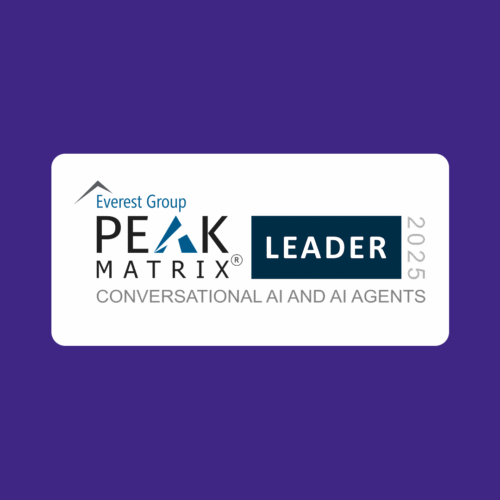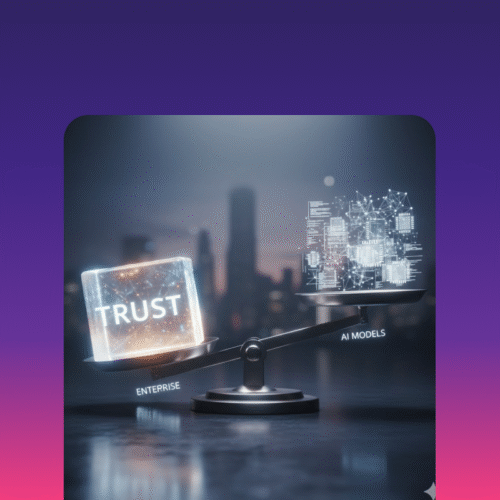Conversational Artificial Intelligence (CAI) has become a crucial tool for banking call centers to achieve enhanced self-service fulfillment for their customers. It is possible to achieve very high levels of self-service fulfillment – many of Omilia’s customers reach 75%. But maintaining these enhanced levels in the fast-paced business world can be challenging.
Many banks are using CAI technology that cannot easily adapt to change. When the world, your business products and services, or your customers’ needs change, you need CAI technology that responds quickly and efficiently, moving to where you are instead of staying stuck where you were. Because if you and your technology fall behind the curve, customers can always find a more up-to-date bank.
The world can change quickly – We all just saw it happen
There is no clearer example of how radically the world can change than the COVID-19 pandemic. In just a few months, everything changed. People were living a new way, using a new language, and expressing new concerns. Businesses were upended and had to restructure their operations completely. Self-service bots who couldn’t quickly adapt to all these changes jeopardized banks’ relationships with their customers.
Even in normal times, the banking industry moves at a sometimes dizzying speed, rolling out new offerings that are key to cross-selling. Yet many of our customers tell us that before migrating to Omilia’s enhanced fulfillment CAI, it could take many months and hundreds of thousands of dollars to enact fairly simple-looking changes to their models.
Changing with the world shouldn’t be a struggle
Banks need self-service technology that is intrinsically more adaptable to keep pace with customers and the market. So being forced to rely on a technology vendor and its professional services teams to adapt models is no longer acceptable.
You shouldn’t need to pay a fortune and wait months for a simple change. A bank’s call center employees should have access to a modern, self-adapting CAI that has been designed from the beginning to adapt to new situations quickly.
The more an AI learns, the more it can adapt
One key to more adaptable CAI systems is to use relevant language sets for training. Google, for example, is estimated to have indexed more than 100,000,000 GB of data. But this represents a huge amount of irrelevant data, especially for enterprises wanting to efficiently use data to their advantage. The more relevant the input, the more accurate the AI’s responses. If the data set is too large and filled with unrelated information, you can find yourself like the retailer who discovered that when their Google system heard “bra fit,” it translated it to “Brad Pitt!” – because the data set simply lacked discussions of “bra fit.” This is hilarious – unless you’re the retailer stuck dealing with the resulting customer service issues. Omilia has relevant data – not from YouTube – but from real banks in North America and other countries where it offers its products.
An adaptable CAI leads to better approaches
With a rigid CAI system, every change must be weighed against the time and cost constraints. This encourages a mindset of only making changes if you feel there’s no other choice. But with a truly adaptable CAI system, it is possible to entirely rethink your current customer service model and consider ways to improve it.
For example, think about the impact of a sudden market event – like the COVID-19 lockdown. All of a sudden, customers in their tens of thousands called into their banks to ask how they could access their money. Banks needed to act fast – in days not weeks. They needed CAIs that could handle new types of requests. If adapting the CAI for this unforeseen request took several weeks, then this would create significant costs – in terms of IT time and resources and customer experience.
And that’s the power of adaptable CAIs like OCP. They don’t just keep up with changes in language, circumstance, and business practices. They allow you to reconsider and improve an entire system without requiring a team of coders to build and test new systems and subsystems laboriously.
If your CAI is in your way, replace it
Your software shouldn’t be an impediment when you want to change how you’re doing things. You shouldn’t be worrying about huge costs and long delays or trying to find a workaround to a limitation. You should have an adaptable CAI system that willingly goes where you want it to, providing enhanced fulfillment. That’s Omilia’s approach to CAI, and you shouldn’t settle for anything less.
About the Author
Claudio Rodrigues, Chief Product Officer
With a strong background in product strategy, design, and delivery of Conversational AI solutions, Claudio leads Omilia’s product vision across Conversational AI and GenAI. Claudio connects his expertise in AI with a proven track record of scaling platforms globally and aligning product development with customer needs, ensuring Omilia’s solutions deliver measurable impact across industries.


